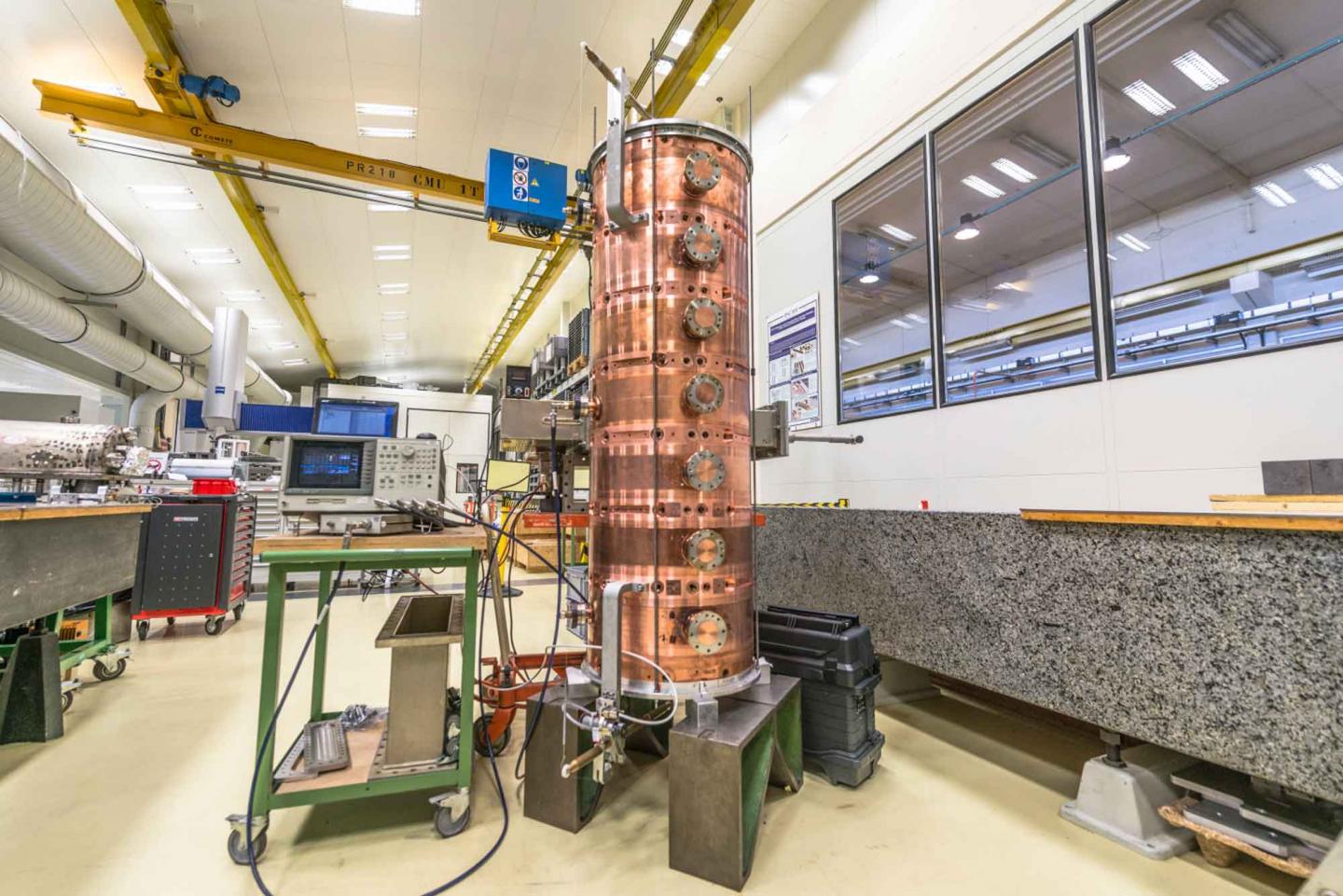Linac 4's PI-Mode Structures (PIMS) are the first structures of their kind to accelerate protons. Now, over three years after work began on production, over 180 PIMS elements have been rough-machined and the first new PIMS cavity is being assembled at CERN.
As the final accelerating structures of Linac 4, located 53 metres to 74 metres downstream of the source, the state-of-the-art PIMS cavities will take protons from 100 to 160 MeV. While the first cavity was built entirely at CERN, construction of the remaining cavities has become a larger, multi-national operation. The newest PIMS cavity is being assembled and validated at CERN's Main Workshop. Built in collaboration with the National Centre for Nuclear Research (NCBJ) in Poland and the Jülich Research Centre in Germany, it is the first of its kind to be produced outside the organization.
Sharing all the required know-how with the external centres proved a demanding task. To ensure the correct construction of these sensitive modules, members of the CERN Workshop and the Linac 4 accelerating structure team organized regular meetings in Poland and at CERN to provide support. "In weekly teleconference meetings the progress is reviewed, information is shared and difficulties are solved jointly," says Rolf Wegner, a member of the Linac 4 PIMS team who also developed the cavity's RF design. "Now most of the parts are routinely machined up to the final stage."
The Polish institute NCBJ made impressive progress in order to meet the demanding specifications. As the search for industrial partners for machining in Poland was not successful, only NCBJ was able to develop production methods to reach tolerances as tight as ±10 microns over a diameter of 540 millimetres.

The electromagnetic field inside the cavity is determined by measuring reflections created by a conducting bead (Image: CERN)
Arriving from Poland part-by-part, it takes around six month to complete and test a PIMS cavity before it can be installed in Linac 4. Each cavity consists of seven coupled cells. In order to save copper, cells are formed by welding together eight discs and seven rings, each with a diameter of 0.5 metres. Together, these create 15 elements per cavity.
After metrology checks, the 15 elements are stacked up to a complete cavity and the RF parameters are determined. Discs are then re-machined on dedicated sections, so-called "tuning islands", to adjust the frequency. Once the frequency has been checked, all 15 elements are surface-treated for vacuum and joined together by electron beam welding. Then final RF adjustments and vacuum tests are performed before the cavity can be connected and high-power tested. Collaboration between many different CERN teams is essential in order to complete all these activities.

